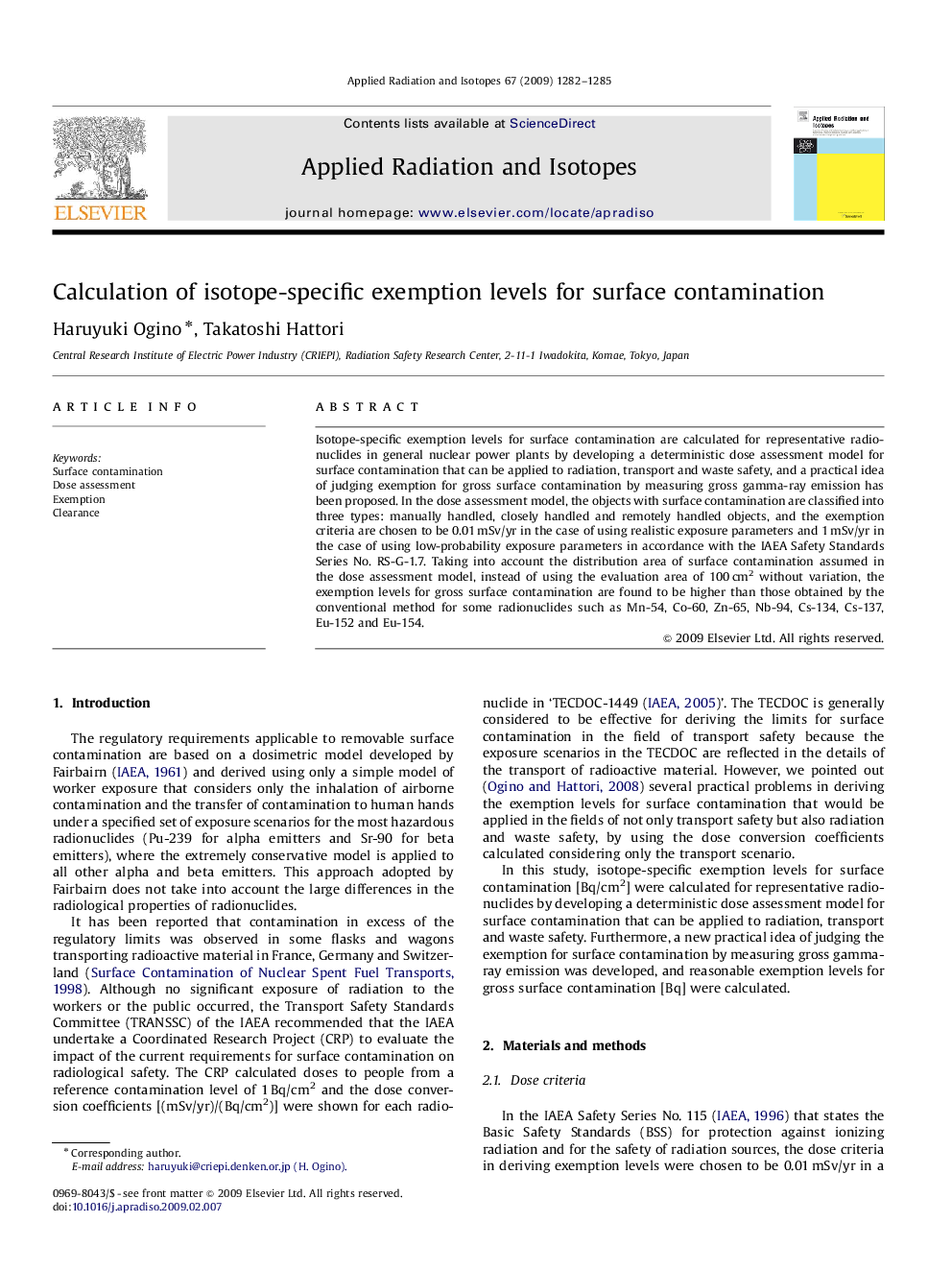| Article ID | Journal | Published Year | Pages | File Type |
|---|---|---|---|---|
| 1878154 | Applied Radiation and Isotopes | 2009 | 4 Pages |
Isotope-specific exemption levels for surface contamination are calculated for representative radionuclides in general nuclear power plants by developing a deterministic dose assessment model for surface contamination that can be applied to radiation, transport and waste safety, and a practical idea of judging exemption for gross surface contamination by measuring gross gamma-ray emission has been proposed. In the dose assessment model, the objects with surface contamination are classified into three types: manually handled, closely handled and remotely handled objects, and the exemption criteria are chosen to be 0.01 mSv/yr in the case of using realistic exposure parameters and 1 mSv/yr in the case of using low-probability exposure parameters in accordance with the IAEA Safety Standards Series No. RS-G-1.7. Taking into account the distribution area of surface contamination assumed in the dose assessment model, instead of using the evaluation area of 100 cm2 without variation, the exemption levels for gross surface contamination are found to be higher than those obtained by the conventional method for some radionuclides such as Mn-54, Co-60, Zn-65, Nb-94, Cs-134, Cs-137, Eu-152 and Eu-154.
